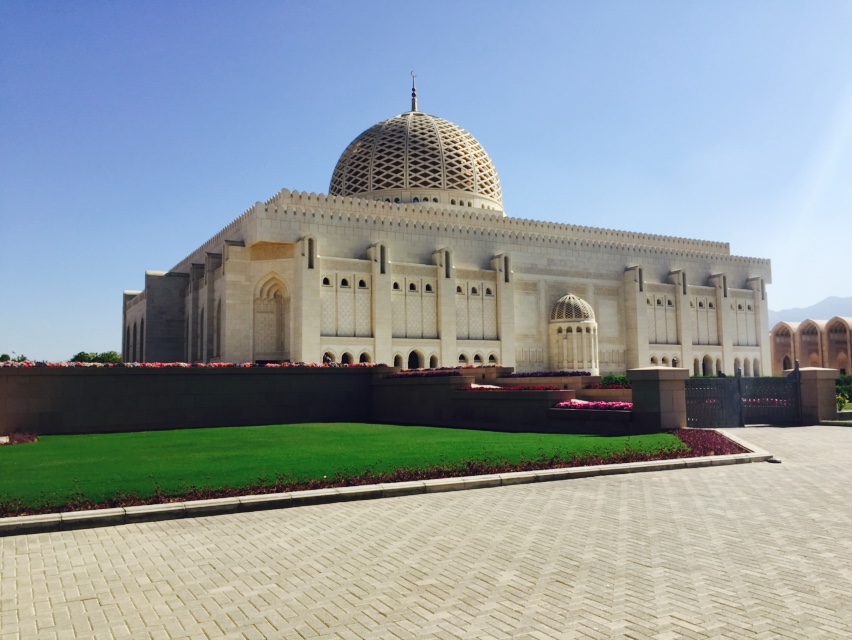 Photo Courtesy of Varun Bhuvanendran
Photo Courtesy of Varun Bhuvanendran
How Has Oman Avoided Terrorist Attacks?
The last two decades have been marked by terror, yet Oman remains one of only a handful of countries to not experience a terrorist attack. In the last month (May 10th to June 10th), there were 223 attacks worldwide resulting in 789 fatalities. How has Oman avoided an attack and is the trend likely to continue? As the country’s leader ages with no known successor, this question is becoming increasingly timely.
A brief history of Oman
Sultan Qaboos bin Said al Said has ruled Oman since 1970 when Qaboos overthrew his father in a coup. Qaboos modernized Oman by developing roads, schools, and hospitals. Businesses expanded as Oman embraced its oil and gas reserves, and the country was able to expand its public service projects and lower crime rates. Today, the World Economic Forum lists Oman as the 4th safest country in the world despite its conflict-prone neighbor, Yemen.
Comparing Oman to its Neighbors
Oman has similarities to its Western neighbor, Yemen, with whom it shares a 187-mile border. Oman and Yemen border large bodies of water and possess highlands that are good for agriculture. Until the mid-1900s, they were “two of the world’s least internationally oriented and socio-economically developed countries” and looked as though they would continue to follow parallel trends. Now while Yemen is plagued with ongoing conflict and is consistently in the top 10 for countries most affected and devastated by terrorism, Oman is seen as a peaceful, friendly state due to Qaboos’ consistent policies.
Oman, Kuwait, and Qatar have demonstrated similar foreign policy strategies as each small country has made efforts to bolster discourse in the Middle East. The three states “prefer to play a neutral role and, at times, to mediate between Saudi Arabia and Iran.”
The countries can be compared on several measures, of which only a few are listed below:
| Oman | Yemen | Kuwait | Qatar |
| Population Size | 4,989,401 | 29,534,461 | 4,248,974 | 2,743,901 |
| Homogeneity | Low – very diverse (mostly Arab) | Low – very diverse (mostly Arab) | Low – very diverse (mostly Arab) | Low – very diverse (40% Arab, 18% Pakistani, 18% Indian, 10% Iranian) |
| Religious Breakdown | 85.9% Muslim | 99.1% Muslim | 74.6% Muslim; 18.2% Christian | 67.7% Muslim; 13.8% Christian; 12.8% Hindu |
| GDP | 72.64 Billion USD | 18.21 Billion USD | 120.1 Billion USD | 167.6 Billion USD |
| Corruption Index Score (2018) | 52/100 (rank 53/180) | 14/100 (rank 176/180) | 41/100 (rank 78/180) | 62/100 (rank 33/180) |
| Government Type | Absolute Monarchy | In Transition | Constitutional Monarchy | Absolute Monarchy |
| Political Stability Average (1996-2017) | .81 | -1.97 | .26 | 1.01 |
| Number of Refugees | 5,000 refugees (from Yemen) | 3 million Yemeni displaced; 280,000 Somalian refugees | 92,000 stateless people | 1,200 stateless people |
| Global Peace Index Rank | 2018: 73/163 2013: 45/157 2008: 22/138 | 2018: 158/163 2013: 152/157 2008: 113/138 | 2018: 42/163 2013: 37/157 2008: 42/138 | 2018: 56/163 2013: 19/157 2008: 30/138 |
How has Oman avoided terrorism
Oman has many characteristics of its Middle Eastern neighbors. It shares geographic terrain and a large Muslim population with Yemen, a similar population size with Kuwait, and the same government type and rough political stability with Qatar.
However, Qaboos, “the longest serving Arab ruler in power,” has helped Oman avoid terrorism and violence by promoting stability and allowing the country to develop over time through the leader’s consistent policies.
Whereas other MENA countries experience religious tensions that have led individuals to join terrorist groups, Oman has remained comparatively tolerant. In 1996, Qaboos codified into law the right to worship and the illegality of discrimination on the basis of religion. Almost 75% of Muslims in Oman adhere to the Ibadi School of Islam, which demands strict observance of Sharia law. It is believed that “the adherence to Ibadism is one of the main reasons for the country’s historical isolation in a Sunni-dominated Arab world.” Additionally, Oman is home to “over 60 registered Christian groups, three Hindu temples, and two Sikh gurdwaras.”
Qaboos’ devotion to education has been instrumental in developing Oman. In 1970, there were only three schools (serving 900 boys) in the country. Today there are almost 750,000 students enrolled in about 1,800 schools, and numerous vocational training opportunities and tertiary education at Qaboos University. This focus is vital because “education is the world’s vaccine against terrorism” as it provides skills and a sense of community.
Furthermore, Oman emphasizes nonviolence and avoids “direct military involvement in regional conflicts,” which helps limit internal radicalization. Oman has also acted as a regional peacemaker to resolve issues in the MENA region. The country has been active in bringing parties together to negotiate, particularly on behalf of states whose citizens were abducted by “hostile governments or terror outfits.”
Looking Forward
There is no doubt that Qaboos has done a remarkable job modernizing Oman. Yet one must wonder what will happen after the 78-year-old is gone. The popular ruler has no children or brothers, so it is unclear who will be next, and if the stability Qaboos has developed will continue. As a country located in a conflict-prone region that is beginning to feel the economic effects of diminishing oil reserves, will Oman finally fall prey to the terrorist organizations stalking the region?





